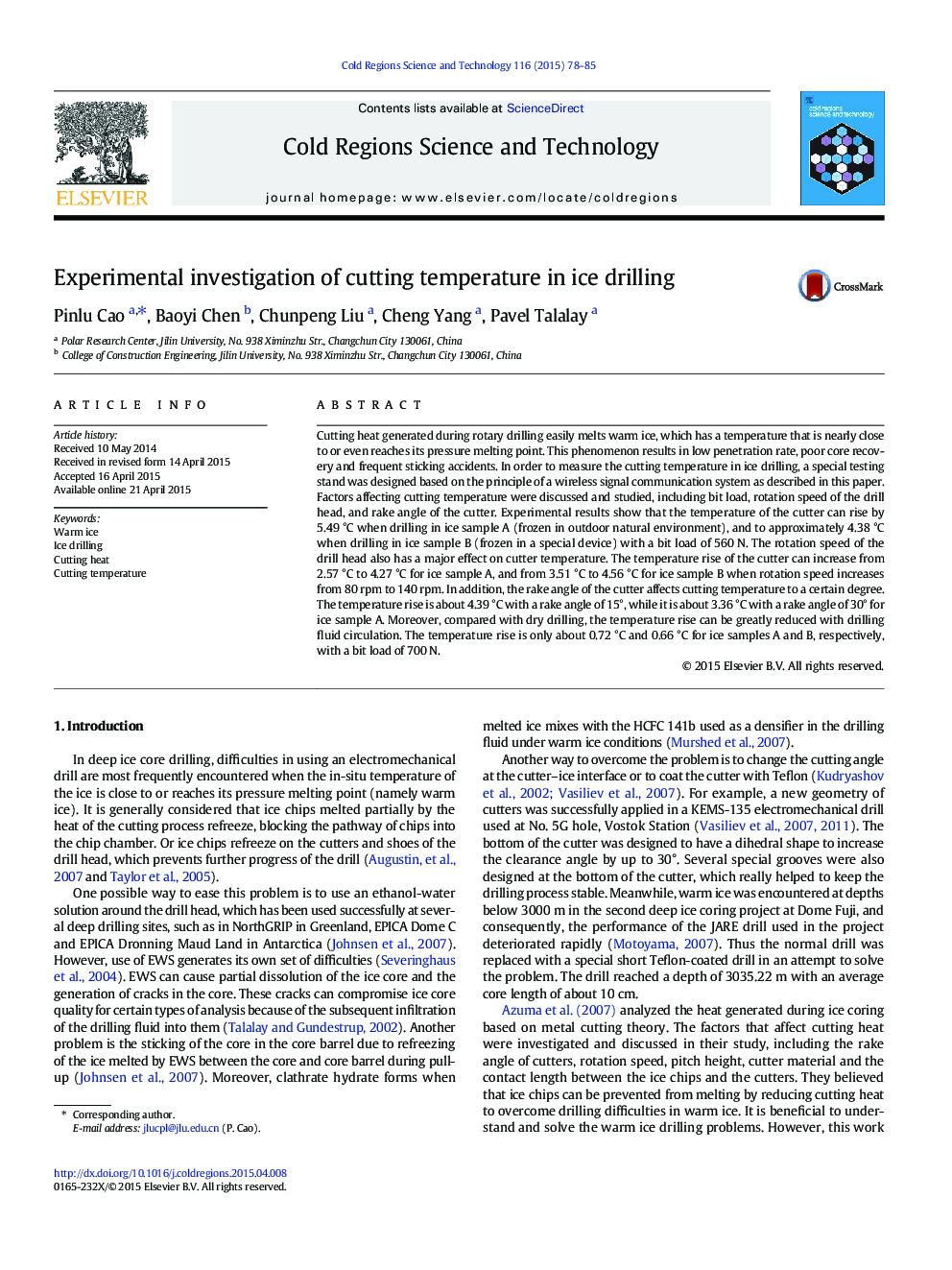| Article ID | Journal | Published Year | Pages | File Type |
|---|---|---|---|---|
| 4675700 | Cold Regions Science and Technology | 2015 | 8 Pages |
•A special testing stand was designed to measure the cutting temperature.•The effects of drilling parameters on cutting temperature were tested.•The effects of the cutter rake angle on cutting temperature were tested.
Cutting heat generated during rotary drilling easily melts warm ice, which has a temperature that is nearly close to or even reaches its pressure melting point. This phenomenon results in low penetration rate, poor core recovery and frequent sticking accidents. In order to measure the cutting temperature in ice drilling, a special testing stand was designed based on the principle of a wireless signal communication system as described in this paper. Factors affecting cutting temperature were discussed and studied, including bit load, rotation speed of the drill head, and rake angle of the cutter. Experimental results show that the temperature of the cutter can rise by 5.49 °C when drilling in ice sample A (frozen in outdoor natural environment), and to approximately 4.38 °C when drilling in ice sample B (frozen in a special device) with a bit load of 560 N. The rotation speed of the drill head also has a major effect on cutter temperature. The temperature rise of the cutter can increase from 2.57 °C to 4.27 °C for ice sample A, and from 3.51 °C to 4.56 °C for ice sample B when rotation speed increases from 80 rpm to 140 rpm. In addition, the rake angle of the cutter affects cutting temperature to a certain degree. The temperature rise is about 4.39 °C with a rake angle of 15°, while it is about 3.36 °C with a rake angle of 30° for ice sample A. Moreover, compared with dry drilling, the temperature rise can be greatly reduced with drilling fluid circulation. The temperature rise is only about 0.72 °C and 0.66 °C for ice samples A and B, respectively, with a bit load of 700 N.
